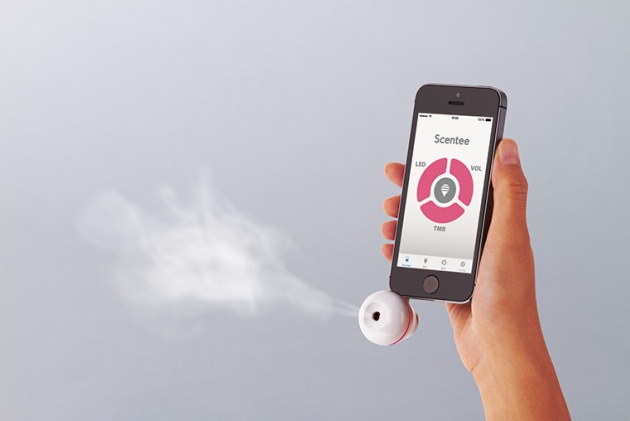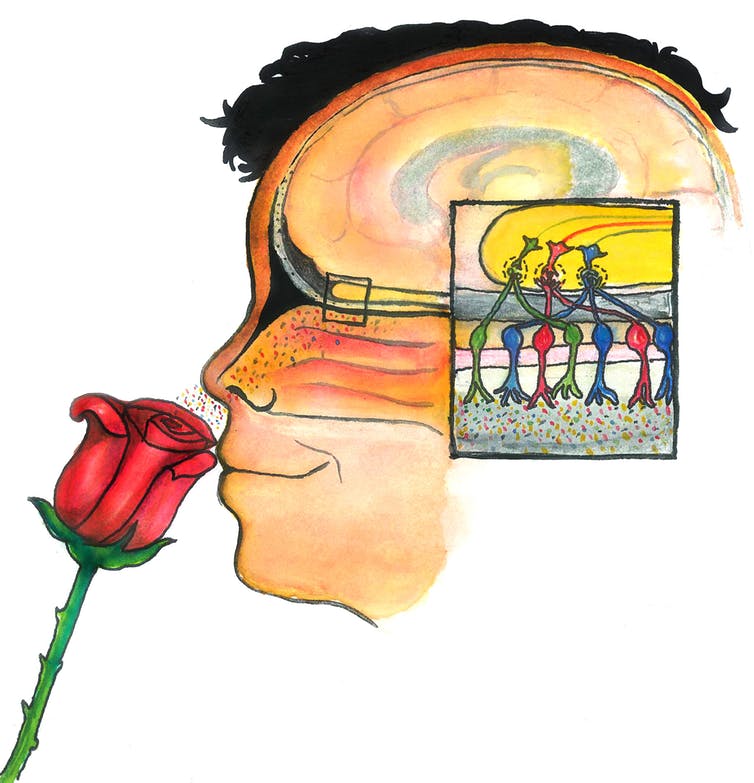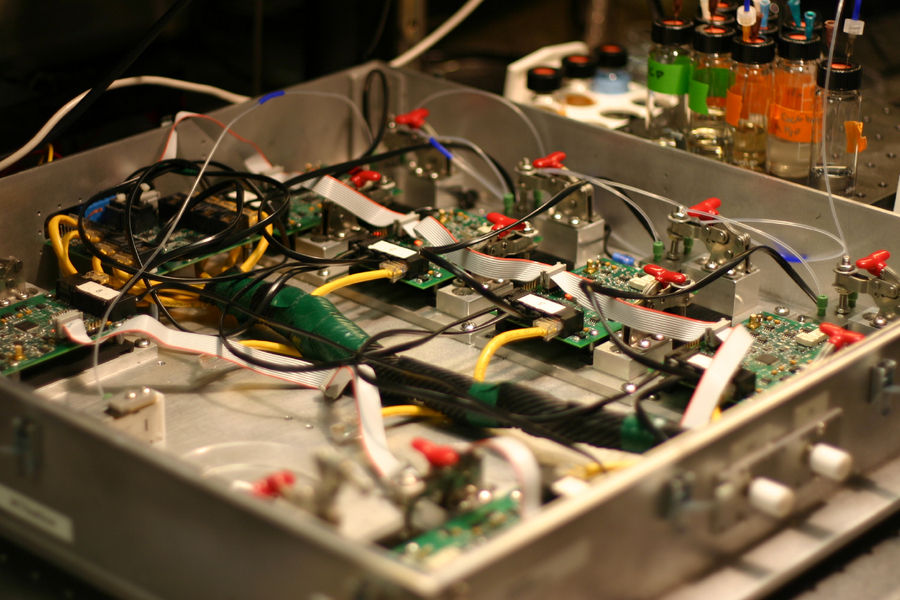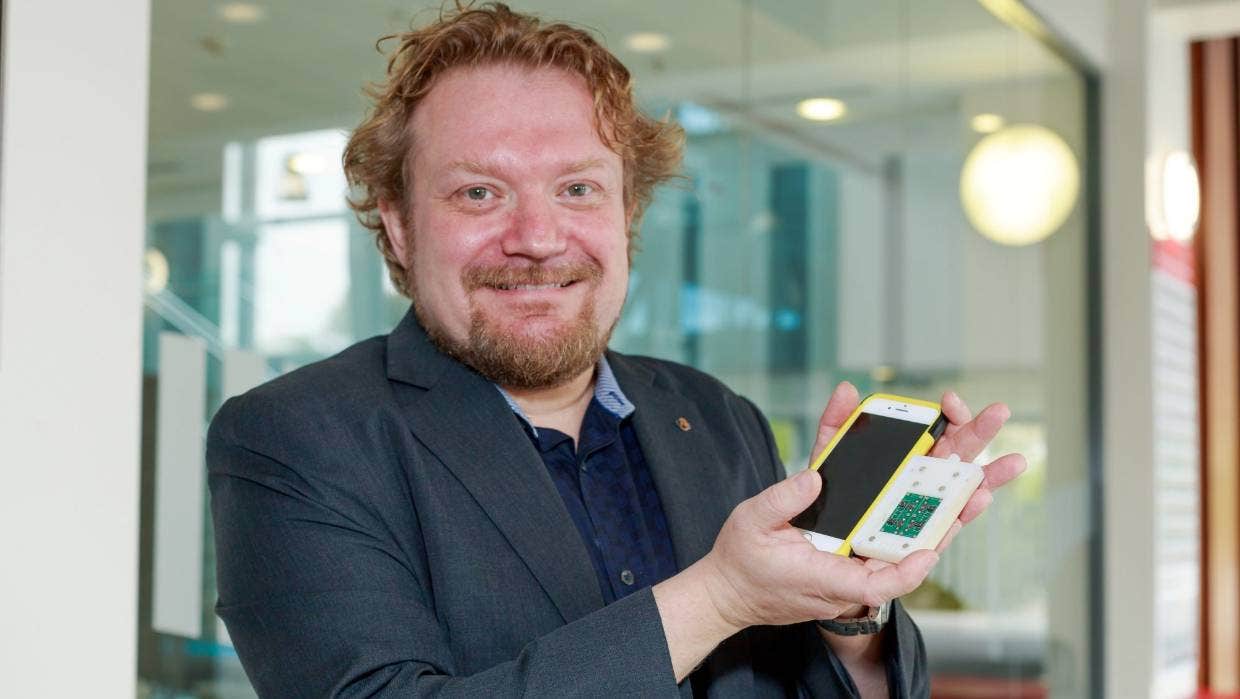In our homes and in our pockets right now, there are electronic devices that can hear, see and sense our touch. Your smartphone can do all three of those things. There are monitors that even give you a taste.
So what is missing? A phone that can smell!
But it will soon appear, a smartphone equipped with an odor detection sensor. “I think we’re five years away from it, maybe a little shorter“, said Andreas Mershin, a scientist and technology inventor at the Massachusetts Institute of Technology (MIT).

It’s not that taste-sensing technology hasn’t come out yet, Mershin says scientists like him have successfully developed them. All you need to do now is shrink them down and put them inside a phone.
“And what I’m saying here is the pervasiveness of odor sensors on hundreds of millions of phones“, Mershin emphasized.
Why should a phone smell?
“Hey, Google! Do I need to take a shower?”that’s just one of the small applications of equipping the smell sensor on your mobile phone.
Imagine a phone that can tell you when food is ready? When is the CO2 concentration in the room too high? And it will of course also ring when it smells smoke.
But a phone that can smell could even save your life. Smell is – in fact – also an indicator of disease.
“Dogs can be trained to smell patients with malaria, Parkinson’s, cancer and even COVID-19,” said Claire Guest, a scientist who is training dogs to smell samples.
She herself was saved by a dog named Daisy, “when one day it just stares at me and then pokes its nose at me”. The dog smelled something, Guest then went to the doctor and discovered a lump in the breast.
A dog is being trained to smell disease in humans.
Daisy discovered the tumor when it was at a very early stage, the decisive factor in helping Guest get timely intervention and cure her cancer. Mershin says: “Anyone of us can have a mole that becomes melanoma. If you let it grow six months early, it can sometimes become a death sentence.”
However, training medical dogs is not a simple task. This process is also very expensive, both in terms of time and money.
Plus, not all patients like dogs, and not everyone enjoys being sniffed by dogs during their doctor’s appointment. Therefore, scientists are looking to create a robotic nose, which can replace the tasks of current dogs.
How to make robot noses?
To be able to create machines that can smell and recognize scents, scientists need to understand how our noses work in real life. They know that deep in each nostril there are special receptors, capable of interacting with the odorous gas molecules that we breathe in.
These receptors, once activated, send electrical signals to the brain for analysis. Complicating matters is that there are more than 400 different types of scent receptors in our noses. For comparison, there are only about 4 types of light-sensing receptors in the eye.
That explains why our sense of smell is so sharp. The same two molecules have similar shape and structure, but the smell we perceive them is very different.

Mershin said that to be able to recreate the biological sense of smell on robots, scientists need to build machines worth hundreds of millions of dollars. “And I find it frustrating that a machine that costs $100 million is still giving up on a dog smell test“, Mershin said.
“That is unacceptable“. Mershin was not willing and he began to engage in the work of making new odor detection devices.
In 2007, Mershin participated in a study commissioned by DARPA, the research and development agency of the United States Department of Defense. They are looking to create a robotic nose that can detect certain molecules.
Although DARPA has not made the exact list public, based on his conjecture, Mershin suspects the molecules are related to the smell of bombs, drugs or corpses.
So how to make a robot nose? Mershin and Shuguang Zhang, his collaborators at MIT, first thought they could build a device that directly detects each odorant molecule.
That would be something like a CO detector. When any odorous molecule enters the detector, similar to when CO gas enters the CO detector, the siren will sound.
Mershin and Zhang used biological, real-time odor-detecting receptors. They grew these receptors inside the cells. The mechanism of the device is very simple, the pair of scientists will connect these receptors to an electrode that collects a biological current.
When the receptors detect an odor in the air, instead of firing electrical currents back to the brain, they send electrical currents to the biosensor, triggering alarm circuits to sound.
Mershin and Zhang were initially very confident with their idea. But when they finished building the device, they immediately discovered the problem. The bioreceptors are so sensitive, they fire off an electric current all the time, and the siren sounds almost never off. The first machine was, essentially, bankrupt.
Nano-Nose, an AI-integrated odor detection system
Not giving up after the first failure, Mershin and Zhang analyzed the previous failure and came up with a new idea. This time, to avoid oversensitive biological receptors, they didn’t create electrical circuits that detect individual odors.
Instead, the duo wants to aim for a robotic nose that detects mixtures of odors. The overall smell is more of a big picture, says Mershin. It is how a set of molecules come together and create complex interactions with a wide range of receptors in the nose.
After all, we never smell individual CO. But we can smell a fire, which combines many different gas molecules, including CO.
Mershin and Zhang call their new machine Nano-Nose. And since it’s aimed at total odor detection, the device’s receptor circuits must be able to capture patterns of bioelectrical currents that are frenziedly emanating from the bioreceptor.
That’s something humans can’t do. Mershin and Zhang went on to develop an artificial intelligence algorithm, an AI that can read and learn these electrical signals.
Interestingly, the process of teaching Nano-Nose each different smell is the same as that of biologists like Guest training dogs. Mershin exposed Nano-Nose to a set of patient samples, then let the AI train itself to recognize odors.
The machine has basically passed the DARPA test. But unfortunately the US military stopped their development program.

The electronic sniffer system that Mershin is developing is now the size of a laptop.

But Mershin is trying to shrink it to fit a phone.
Mershin and Zhang once again did not give up. If the military doesn’t use it, they will develop robotic nose devices for commercial use. Their aim is to try to direct Nano-Nose into everyday applications.
In the real world, there are countless smells floating around us. This was a very different situation from the controlled environment in DARPA’s lab, where Mershin and Zhang’s machine only needed to pass each test with each individual scent.
But Mershin says this problem can be solved when he trains Nano-Nose and its AI algorithm with more samples. The biggest barrier right now is still the size of the device.
Nano-Nose is now the size of a desktop computer. Mershin now says he’s actively looking for new technologies to make his machine small enough to fit on a smartphone.
This machine, for now, is already a proof of concept that we can build machines that can smell. And integrating it into mobile phones will be the next goal, just like we did with the camera.
It won’t be long before your phone shows a dialog box: “Did you allow this app to sniff you?”.
Refer to Vox
